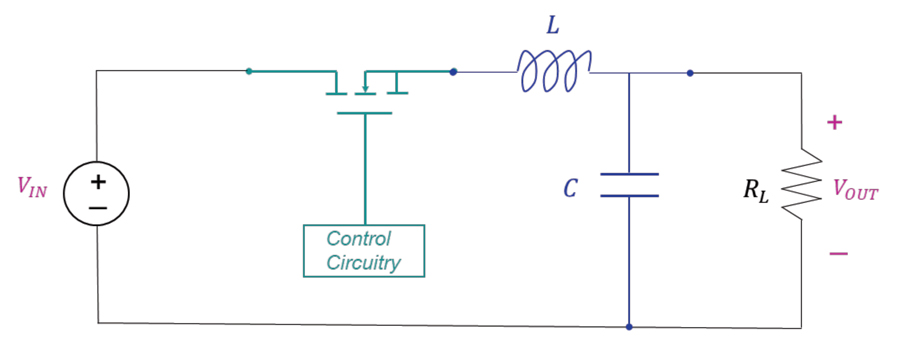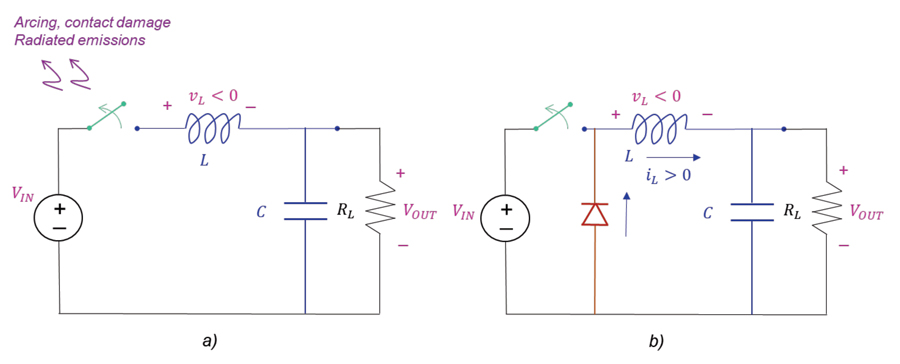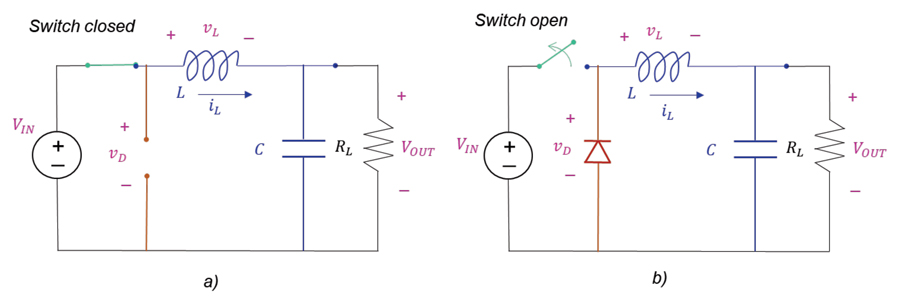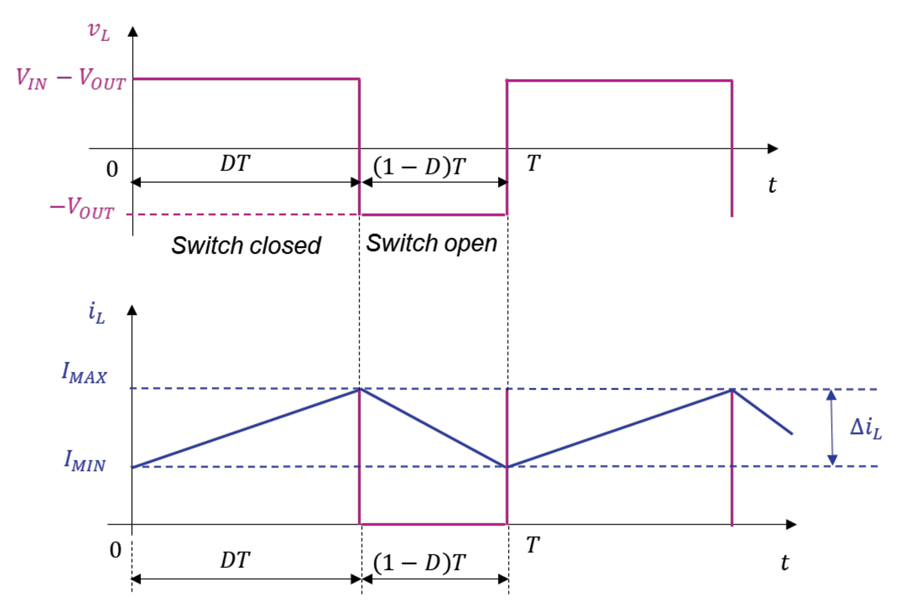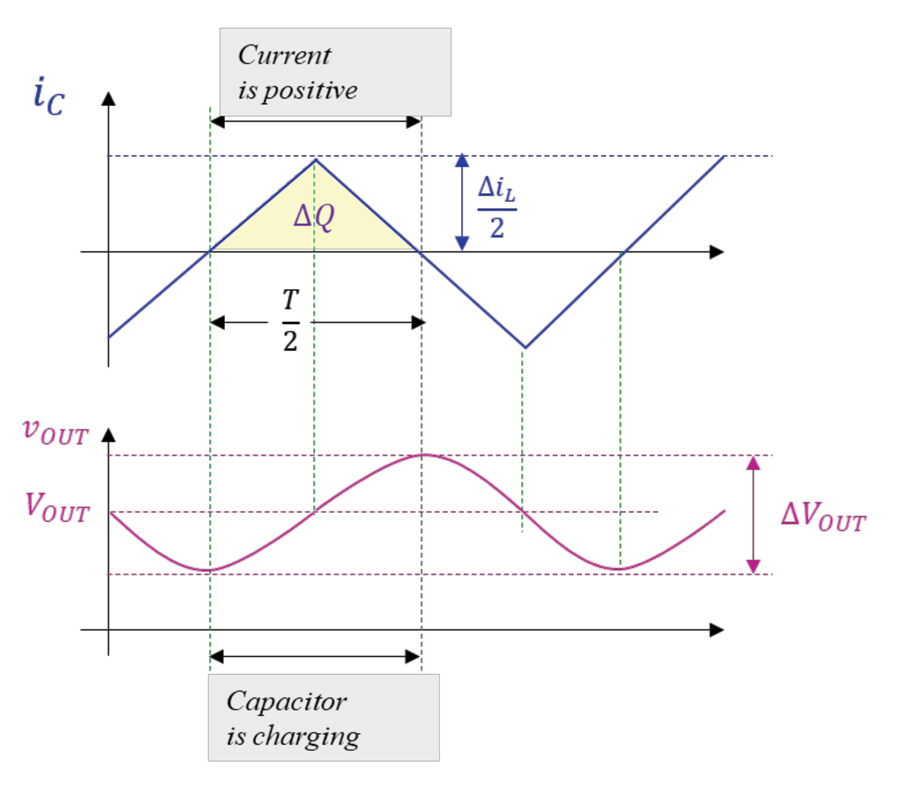his article discusses the basics of a step-down (buck) DC Switched-Mode Power Supply (SMPS). It should serve at an entry-level tutorial and a building step towards the more advanced designs.
The first step in this process consists of creating a Pulse-Width Modulated (PWM) version of the DC input signal, as shown in Figure 2.
The output signal shown in Figure 2 is far from the desired output signal described in our objective. Namely: 1) it is a constant signal only when the transistor is ON, 2) its level, when the transistor is ON, is not lower than the input signal, and 3) it contains high harmonic content during the transition times, [1].
To reduce the unwanted power dissipation in the circuit, RC and RL filters are avoided, and the basic designs utilize a simple LC filter.
Let’s assume that the transistor is OFF, there is no energy stored in the LC filter, and the output voltage is zero. When the transistor turns ON we have the circuit shown in Figure 4(a) (assuming an ideal transistor with no voltage drop).
When the switch opens, a large negative voltage develops across the inductor and subsequently the switch. The magnetic energy stored in the inductor is dissipated in the arc across the switch contacts or is radiated [2], as shown in Figure 5(a).
The basic design of this SMPS amounts to the proper choice of the components, L and C, to satisfy the imposed design requirements. The component values are determined through the circuit analysis when the transistor is ON (switch closed) and when it is OFF (switch open). The respective circuits and selected circuit variables are shown in Figure 6.
If the switch closes before the inductor current (and output voltage) goes to zero in the switching cycle, the SMPS will operate in the so-called continuous conduction mode. This is the preferred mode in EMC – it results in a smaller output ripple, smaller load-current variations, and lower EMC emissions.



The voltage across the inductor is




The voltage across the inductor is







Next, let’s calculate the average, maximum, and minimum inductor currents. In a steady-state operation the average capacitor current, IC = 0, [3]. It follows that the average inductor current, IL, must be the same as the average load current, IR. That is,







Now, we can calculate the minimum value of the inductance, LMIN, for the continuous mode of operation. At the boundary between the continuous and discontinuous mode IMIN = 0. Thus, from Eq. (17a) we get




The change in the capacitor charge, ∆Q, is equal to the triangle area under the capacitor current curve when the capacitor is charging. That is,









- Daniel W. Hart, Power Electronics, McGraw Hill, New York, NY, 2011
- Bogdan Adamczyk and Bill Spence, “SMPS Input Filter Design: Negative Resistance Approach,” In Compliance Magazine, May 2018.
- Bogdan Adamczyk and Bill Spence, “RC Snubber Design for SMPS Protection – Part I,” In Compliance Magazine, February 2019.
- Bogdan Adamczyk and Bill Spence, “RC Snubber Design for SMPS Protection – Part II,” In Compliance Magazine, March 2019.



